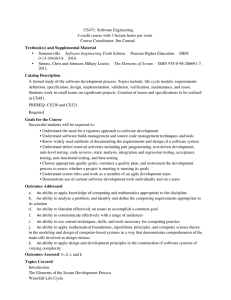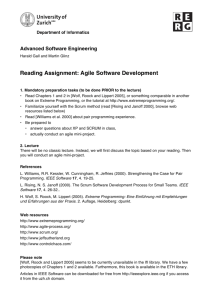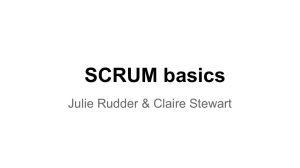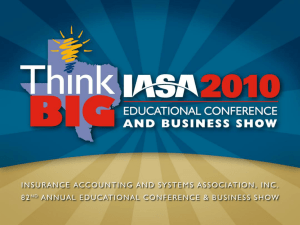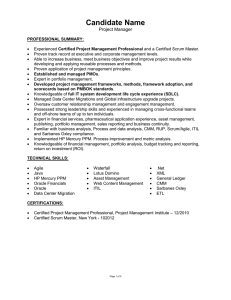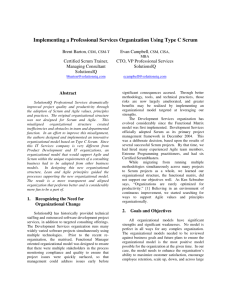Extension 16 PPT
advertisement
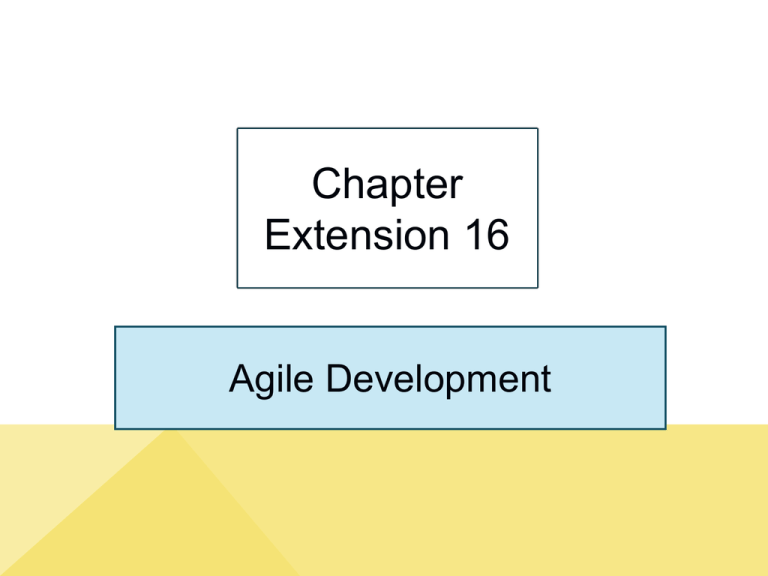
Chapter Extension 16 Agile Development Study Questions Q1: Why is the SDLC losing credibility? Q2: What are the principles of agile development methodologies? Q3: What is the scrum process? Q4: How do requirements drive the scrum process? ce16-2 Q1: Why is the SDLC Losing Credibility? • Systems requirements are fuzzy and always changing • Waterfall method does not work well • Very risky – users cannot see system until end • Project often runs out of money or time before completion • SDLC assumes requirements don’t change ce16-3 Q2: What Are the Principles of Agile Development Methodologies? ce16-4 Q3: What Is the Scrum Process? ce16-5 Scrum Process ce16-6 Key Roles • Product owner – Business professional who provides requirements, clarification and testing • Scrum master – Coach or referee, guardian of members’ time • Team members – Programmers, systems analysts, business analysts, database designers, cloud engineers, PQA testing personnel, other staff needed ce16-7 Stand-up Meetings • 15-minute meeting each team member states: What he or she has done in past day What he or she will do in coming day Any factors blocking his or her progress/hurdles • Purpose — accountability for progress and give public forum for blocking factors ce16-8 Paired Programming • Two members share a computer and write a computer program together. • One programmer provides a test, other demonstrates code passes test or changes code. • Minimal documentation created ce16-9 When Are We Done? • Customer is satisfied with the product created and accepts it, even if some requirements left unsatisfied. • Project runs out of time. • Money runs out. ce16-10 Q4: How Do Requirements Drive the Scrum Process? • Requirements drive planning and scheduling • Answers "Who does what and why?" • Product owner creates requirements and prioritizes them. ce16-11 Creating Requirements Tasks ce16-12 Scheduling Tasks • Way tasks are scheduled makes scrum innovative • Developers terrible determining how long a task will take, good at how long something will take in comparison to something else • Assign each task a difficulty score, called points (weights) – Team estimation and planning poker ce16-13 Committing to Finish Tasks Team velocity – Total number of work points team can accomplish each scrum period. – Determines how many requirements team can commit to in next scrum period. ce16-14 Summary of Scrum Estimation Technique ce16-15 Hocus-pocus (trickery)? • Scrum incorporates team iteration and feedback for scheduling and tasking. • Team can create something that far exceeds what each member can do individually. • Over time, team learns to assign points more accurately, and knows its true velocity. • Scrum is a good technique, but it's not magic. ce16-16

